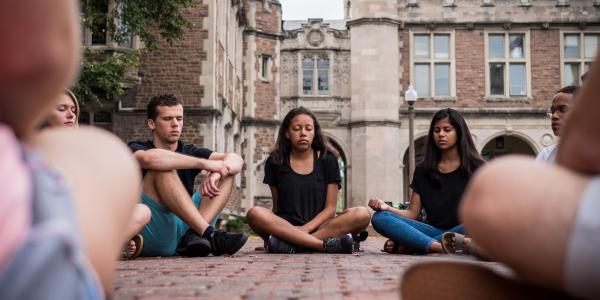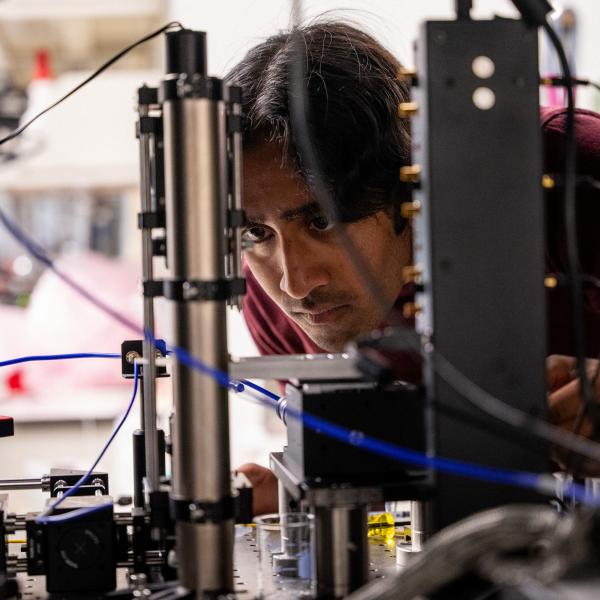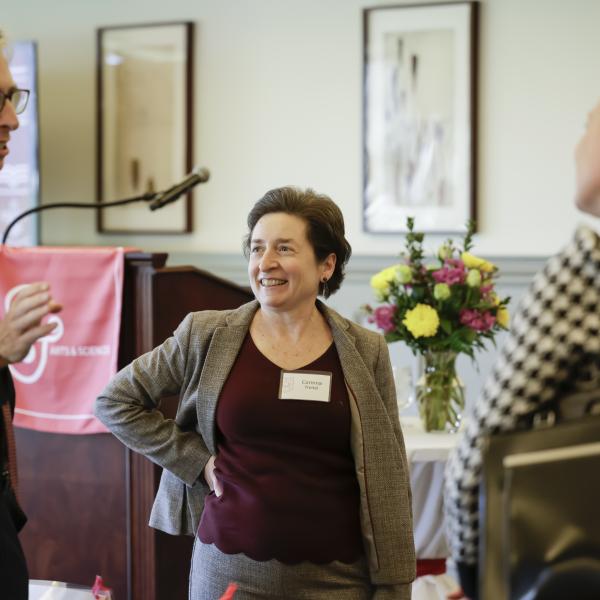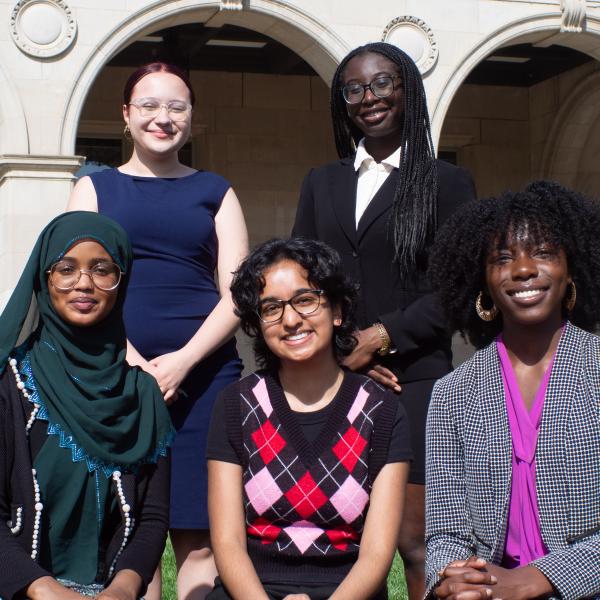“Mindfulness” has become a bit of a buzzword lately. It’s on television, in magazines and movies, and—of course—there’s an app for that. Everyone from major corporations to preschools have integrated mindfulness into their routines in an effort to try to improve employee and student health and well-being. But what is mindfulness? How does one practice it? Is it yoga? Meditation? Besides being “good” for you, what are its real, practical benefits? And does it really deserve all the hype?
Two WashU psychologists, Todd Braver and Heather Rice, are interested in helping students explore these questions. Braver, a professor of neuroscience, radiology, and psychological and brain sciences, teaches a first-year seminar called “Mindfulness: Science and Practice,” in which students get direct experience with various mindfulness practices, as well learning about the scientific research that has been conducted to investigate the effects of mindfulness practice on psychological and brain function. He also conducts his own studies on the effects of mindfulness on the brain. If you're interested in reading more about his research and studies on mindfulness, visit Part II of this series.
But isn’t mindfulness also a form of religious practice? Rice, an assistant dean in the College of Arts & Sciences and a senior lecturer in psychological and brain sciences, addresses just this intersection of science and religion in her sophomore seminar “Mindfulness in Psychology and Eastern Philosophies,” which explores the connection between these two seemingly disparate fields. If you're interested in exploring more about the overlap between religion and science in mindfulness, visit Part III of this series.
The Basics
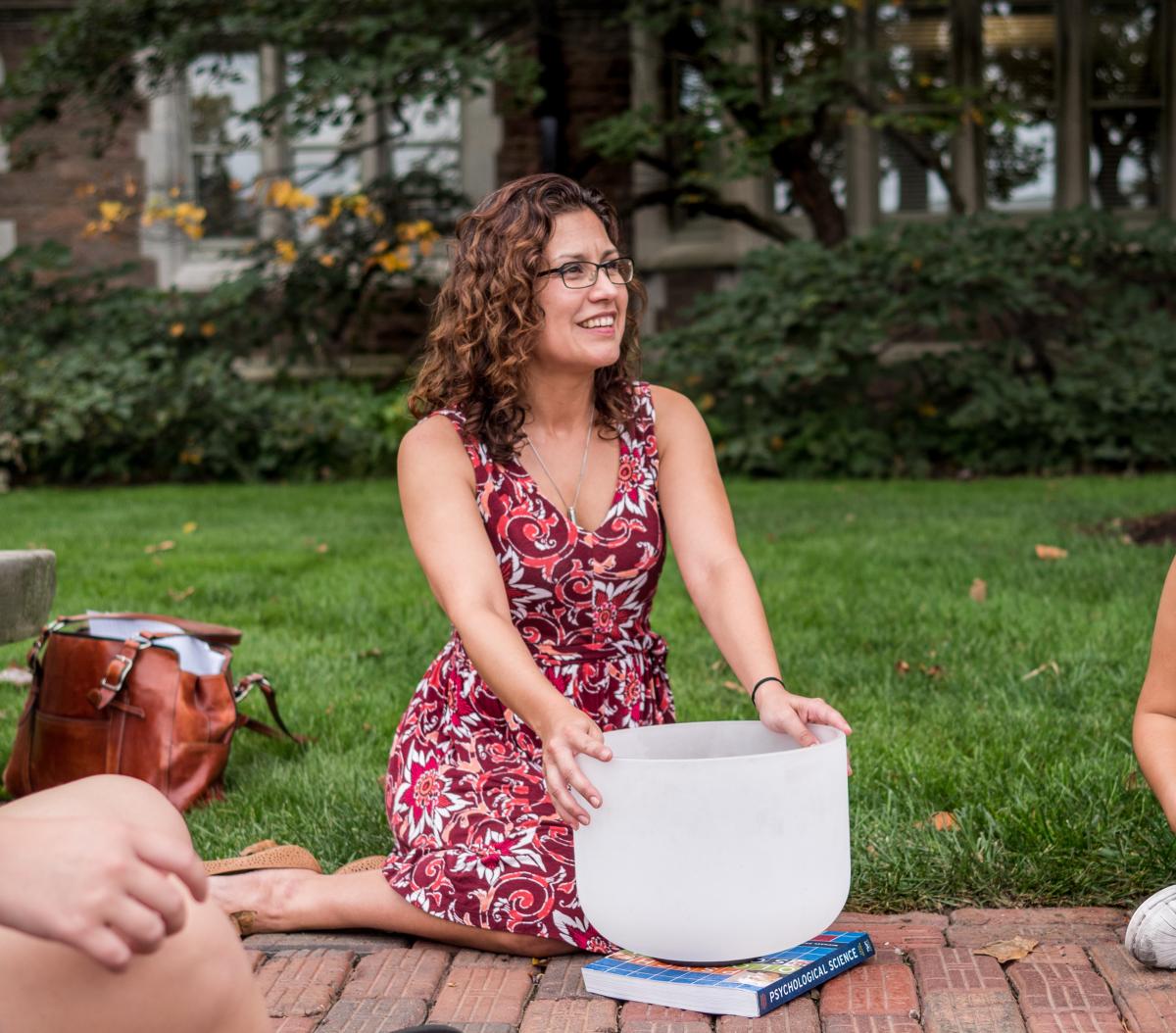
“The idea behind mindfulness is being aware in the present moment, in a non-judgmental way,” Rice says. “Many of us, oftentimes, as we're engaged in activities, are not really ‘there.’ So we might be walking across the quad and instead of focusing on what's going on physically or mentally at that moment, we're thinking about what we have to do later, or a conversation that we had previously and how it either went well or it went wrong. We spend a lot of thinking about either the past or the future. And often we're doing that in a judgmental way.”
“Mindfulness is about being right in this moment and focusing—not on whether you are doing well or are doing poorly—but just noting ‘this is how things are’ and being content with the current moment. So if you're walking across the quad, rather than being on your phone or thinking about a conversation, you are noticing your environment, you're noticing the way that your feet feel as you're walking, you're noticing the breeze on your skin, the thoughts that are running through your head. That is the idea of mindfulness.”
Braver breaks this experience down into its three essential components. “So one aspect of mindfulness is concentration, which is being able to stay focused on things and not have your mind wander. The second is a kind of sensory clarity, to be able to really discriminate different aspects of your experience, to tease them apart and notice, ‘Oh, I'm having this visual information. I'm having this auditory information. I'm having these bodily sensations.’ And third is this idea of equanimity, which relates to the non-judgmental aspect, that you're not overly reactive, but instead trying to remain balanced and calm as you assess this information.”
Most people don’t spend a lot of time just being present these days. Ruminating about the past and worrying about the future are habits that have been linked to psychological problems like depression and anxiety. Rice says, “When you become more mindful, you begin to realize that you can't change any of these things. You can't change the past, you can't control what's coming up in the future, and so, staying in the present moment helps you focus on what you can control.”
“Many of us, oftentimes, as we're engaged in activities, are not really ‘there...’ We spend a lot of thinking about either the past or the future. And often we're doing that in a judgmental way.”
The Practice
Though both Braver and Rice were skeptics previously, they now practice mindfulness in their own lives. Rice first picked up yoga in her adulthood after a death in her family, and once she saw the benefits, mentally and physically, in her own life, she began reading more about the recent research being done on yoga, meditation, and mindfulness. “As I learned more and thought more about it, I thought students would really benefit from this information,” she says.
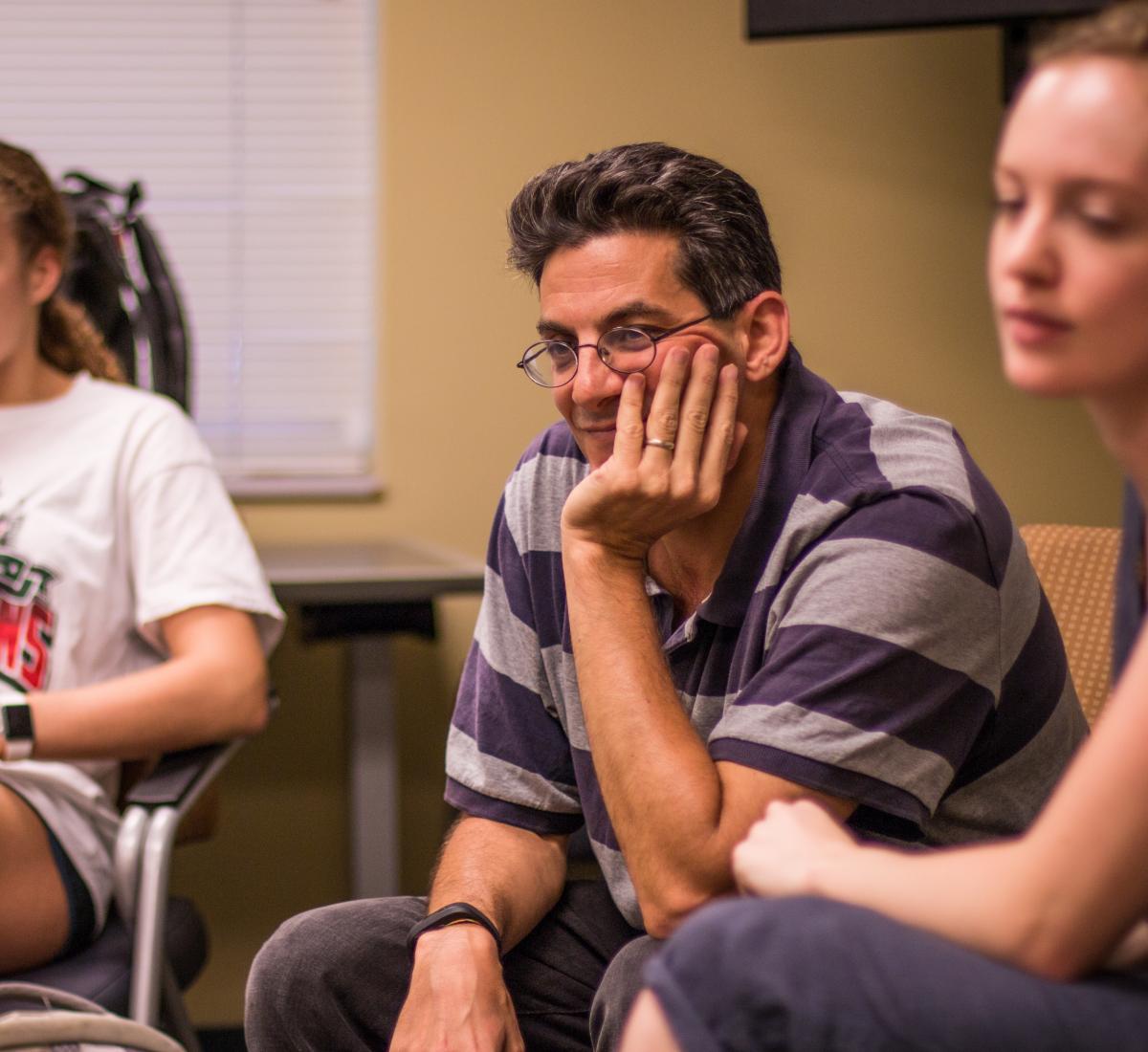
Braver picked up the practice when he turned forty. “I guess it's a little bit cliché to say that I hit 40 years old, and then suddenly became more concerned about whether I was doing enough to make sure I'm improving my psychological well-being, living a full and meaningful life, and being happy,” he says. “A colleague of mine asked if I had thought about practicing mindfulness. I was extremely skeptical, to put it mildly.” However, his colleague eventually convinced him to try to count his breaths for just five minutes a couple times a day. "At first, I was totally dismayed by the fact that I could only count three breaths in a row before my mind would wander, and five minutes seemed like a really long time,” he says, “but then, it seemed like something beneficial was happening.”
“To begin, it really is as simple as turning off all electronics, sitting somewhere quietly for five minutes, and being attentive to the thoughts running through your head and the sensations you are experiencing,” says Rice. “It’s that simple. We just don't do it”.
There are lots of ways to incorporate mindfulness into our everyday life, and not just through meditation. Braver says that the more you do, the more benefits you experience. “Mindlessness is a lot of the problem. We sit there, working on our computers and eating these potato chips, and before we know it, we’ve finished the chips, and we weren't really even enjoying them. We were just on autopilot. But if we were to eat the potato chips—enjoying their texture, taste, and attending to our hunger feelings—we might have just a few before we’re satisfied.”
"It really is as simple as turning off all electronics, sitting somewhere quietly for five minutes, and being attentive to the thoughts running through your head and the sensations you are experiencing."
How to Get Started
There are different types of meditation and exercises one can try. A common one, standardly given to novices, requires focusing on a particular thought or object, like your breath. By attending to just your breath, you are exercising focus. “Buddhists believe that repeating this practice —along with many other practices— will lead to a state of enlightenment,” Rice says. “In a non-religious context, there are some studies suggesting that your attentional focus in the broader world can improve from this sort of meditation.”
A second type of meditation, called “mindfulness meditation,” emphasizes staying in the present moment. Nonjudgement is the key here. Rice says, “If you feel your mind wandering, you don't judge yourself. You just say ‘oh, my mind is wandering,’ and you bring it back to right now. You do this repeatedly, again and again, building up your ability to stay in the present moment over time.” This type of meditation is particularly helpful with depression or anxiety, which involve either ruminating over the past or worrying about the future, making a negative thought pattern. “Mindfulness meditation can help when your mind starts to wander in that negative way, allowing you to pull back and say, ‘No, I'm right here in the present moment.’"
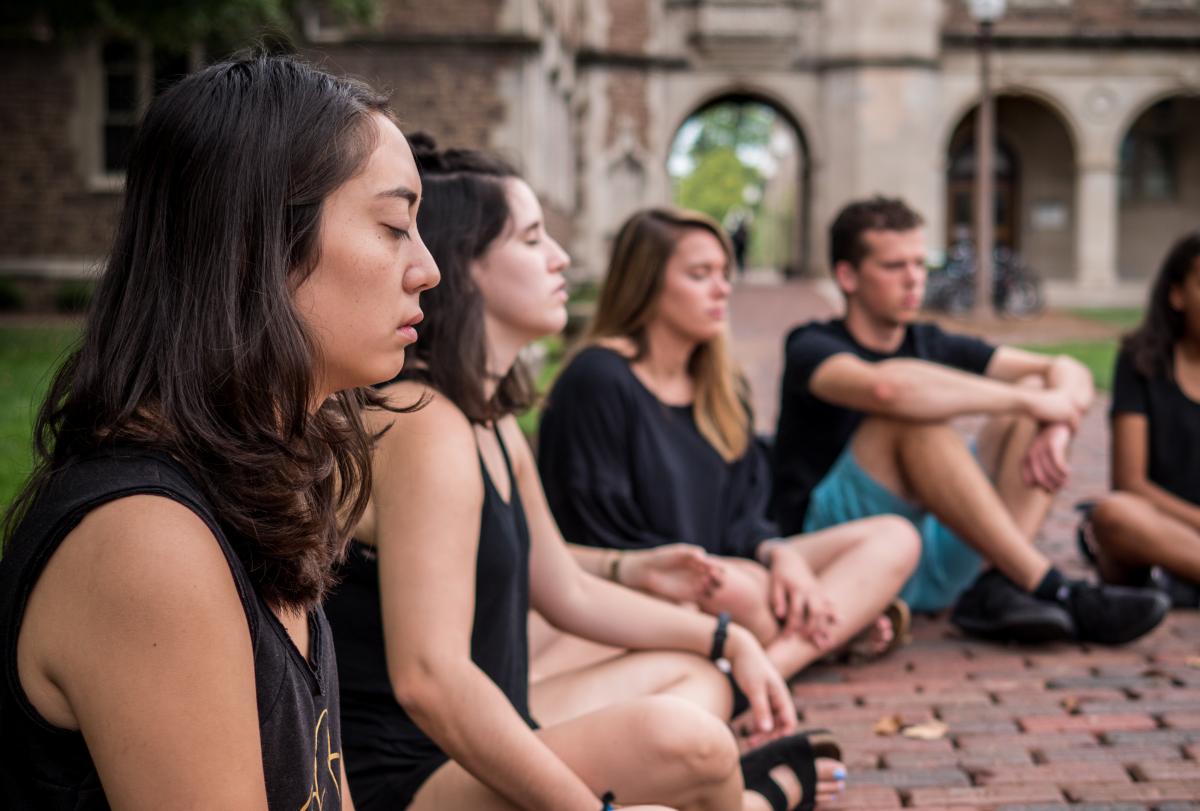
Finally, another great exercise and a useful task for beginners is what Rice calls “mindful eating,” where, as she puts it, “you just sit and eat. You don't watch TV; you don't look at your phone. You pay attention to every bite that you take. You notice the sensations in your mouth, the textures, the tastes. You make sure that you're chewing everything fully. I often ask students to try it first with just five grapes, just mindfully eat those five grapes.”
“You can start by doing these little, tiny tasks where you're really focusing on being in that present moment and not judging any of the things that come to mind,” advises Rice. “And remember that if you suddenly feel like you're not doing it right, you are. The act of engaging in these tasks moves us along the path to greater mindfulness. Every time you do it, the experience will be slightly different, and none of those experiences are ‘wrong’ or ‘right.’ They just are.”
Being Present in 2017
It’s easy to come up with theories as to why the ideas and practices of mindfulness are becoming so popular in Western culture in 2017. In this Age of Constant Connectedness, where the phone in your pocket is always buzzing with calls, texts, emails, and notifications from social media, and where the latest news breaks faster than most people can read it, is it really so hard to believe that people want to slow down?
“Today people often talk about having lots of sources of stress, lots of competition for their attention, which makes it hard to focus,” says Braver. “Another pervasive worry people share is this feeling that ‘no matter how my life goes, even when I think things are going pretty well, I often feel dissatisfied.’ Or ‘I'm feeling upset, and I can't detach from that.’ I think the complexity and fast pace of modern life makes mindfulness appealing.”
A lot of us move through our lives just trying to get to the “next thing,” and this is really problematic, says Rice. “Constantly waiting for the next thing to appear means that you're never truly in the moment that you're in, and you're missing out on all of these things that are happening right now. Things that are, oftentimes, quite good. And if they aren't good, they're at least there, to be experienced fully.”
"Constantly waiting for the next thing to appear means that you're never truly in the moment that you're in, and you're missing out on all of these things that are happening right now."
The trap, too, is that there is always a “next thing.” Rice says, “We don't think about that enough. This idea that once you get that job, that degree, make that goal weight, there will be some other ‘next thing.’ So regardless of where you are now, whether you're washing the dishes, driving your car, or walking to a meeting, that is ‘the thing’. There is nothing else in the current moment. There isn't anything next because ‘next’ hasn’t come to be yet.”
This is a very different way of thinking for most people. “But if you start small, just a few minutes at a time, that's how you get into it, I think,” Rice says. “Notice when you're not doing it and try to remind yourself, ‘I can just be here, and that's OK.’"
If you're interested in reading more about how one studies mindfulness and Braver's research, visit Part II of this series. If you're interested in exploring more about the overlap between religion and science in mindfulness, visit Part III of this series. Or return to the series homepage.
